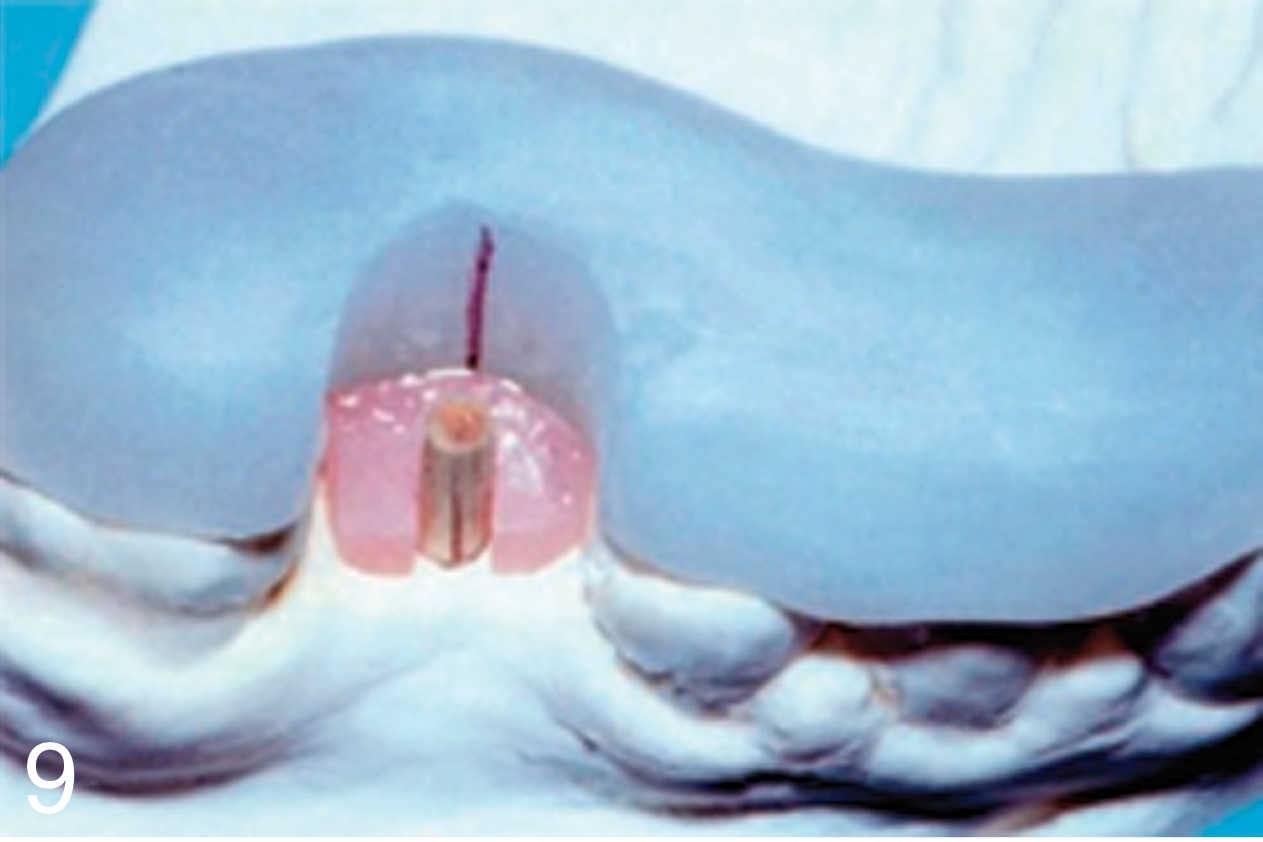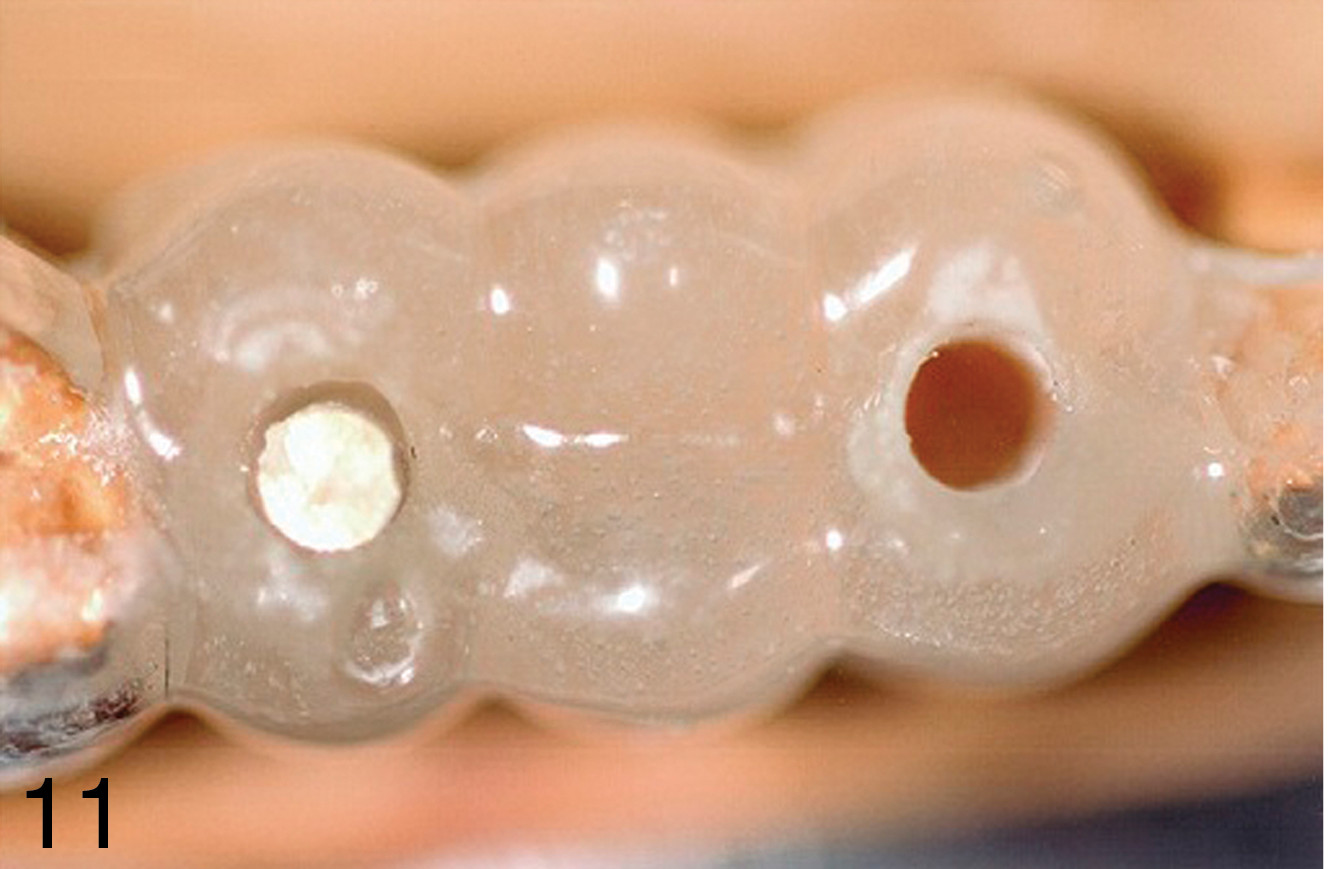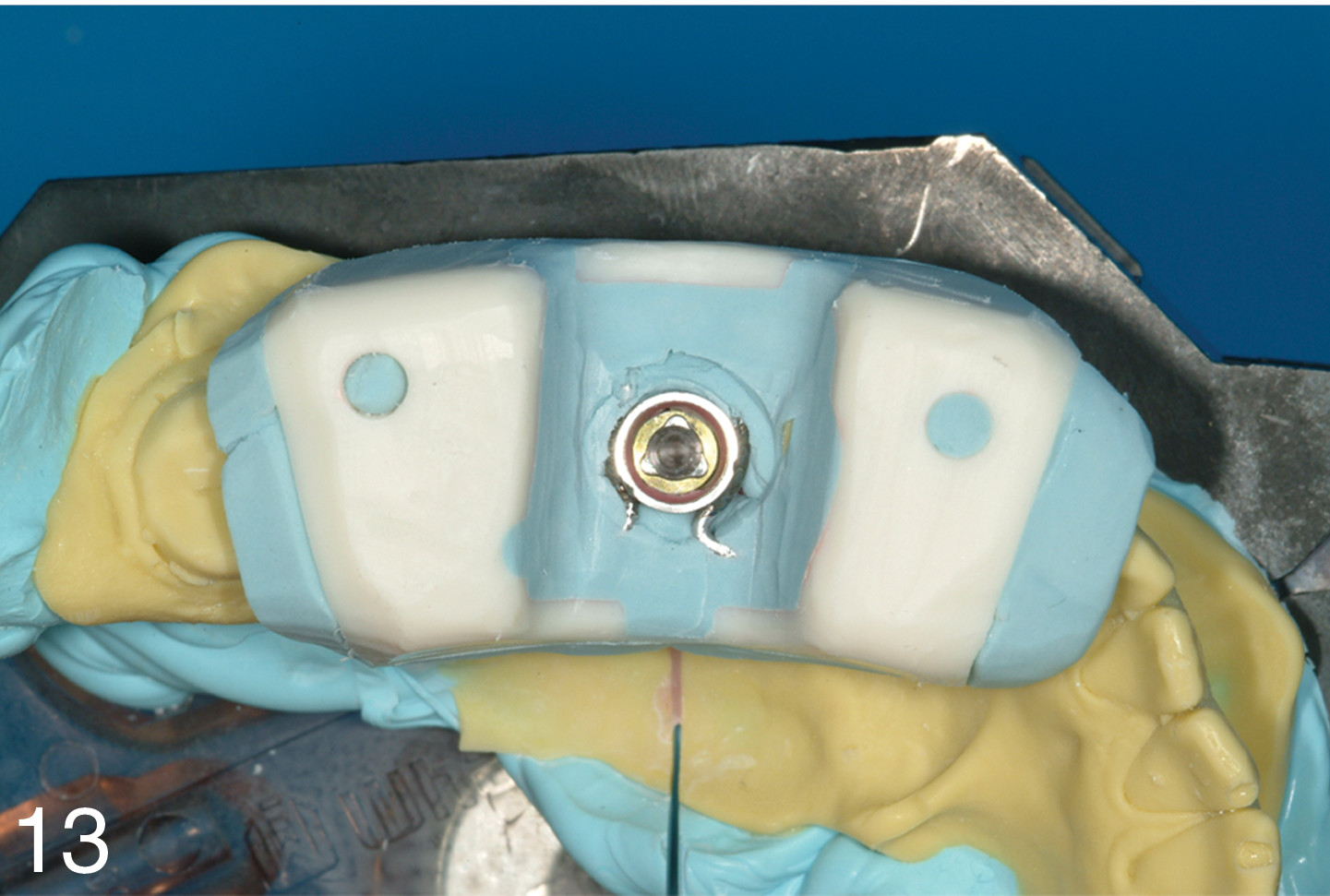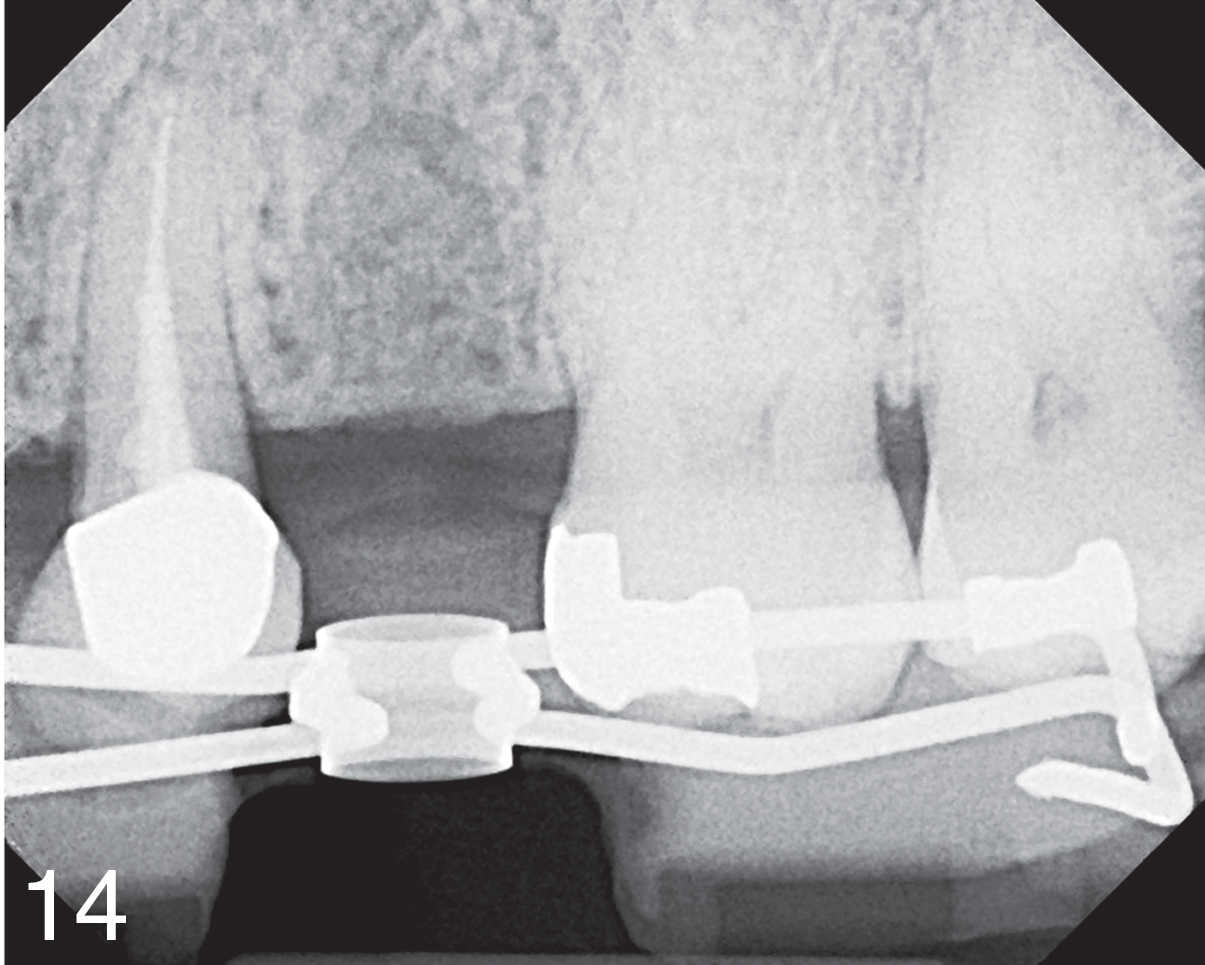Completely Limiting Design : Types of Implant Surgical Guides in Dentistry
Completely Limiting Design
Completely limiting design restricts all of the instruments used for the osteotomy in a buccolingual and mesiodistal plane. Moreover, the addition of drill stops limits the depth of the preparation, and thus, the positioning of the prosthetic table of the implant. As the surgical guides become more restrictive, less of the decision-making and subsequent surgical execution is done intraoperatively. This includes 2 popular designs: cast-based guided surgical guide and computer-assisted design and manufacturing (CAD/CAM) based surgical guide.
Cast-based Guided Surgical Guide
The surgical guide is a combination of an analog technique done along with bone sounding and the use of periapical radiographs in a conventional flapless guided implant surgery.6 The periapical radiograph is modified using digital software to help in transposition of root structure onto the cast. The cast is then sectioned at the proposed implant site, and bone-sounding measurements are transferred to help in orientation of the drill bit to perform a cast osteotomy. A laboratory analog is placed in the site, and a guide sleeve consistent with the implant width is modified using wires that are used to create a framework around the teeth. Vinyl polysiloxane occlusal registration material is used to form the superstructure (Figures 13 and 14).








Serial posts:
- Types of Implant Surgical Guides in Dentistry: A Review
- Nonlimiting Design : Types of Implant Surgical Guides in Dentistry
- Partially Limiting Design : Types of Implant Surgical Guides in Dentistry
- Completely Limiting Design : Types of Implant Surgical Guides in Dentistry
- CAD / CAM-based Surgical Guide : Types of Implant Surgical Guides in Dentistry
- Conclusion : Types of Implant Surgical Guides in Dentistry
- Table : Partially limiting design